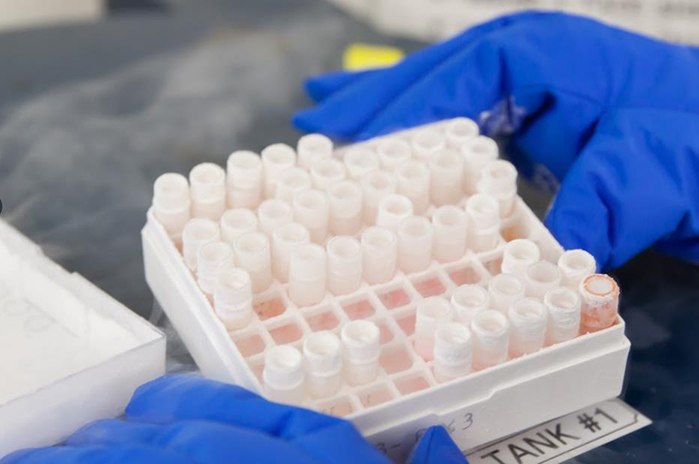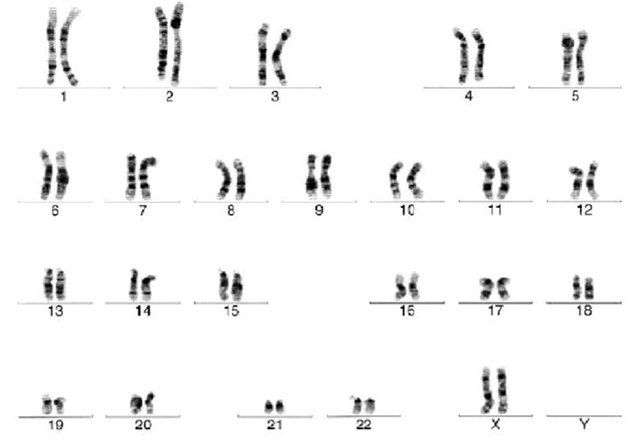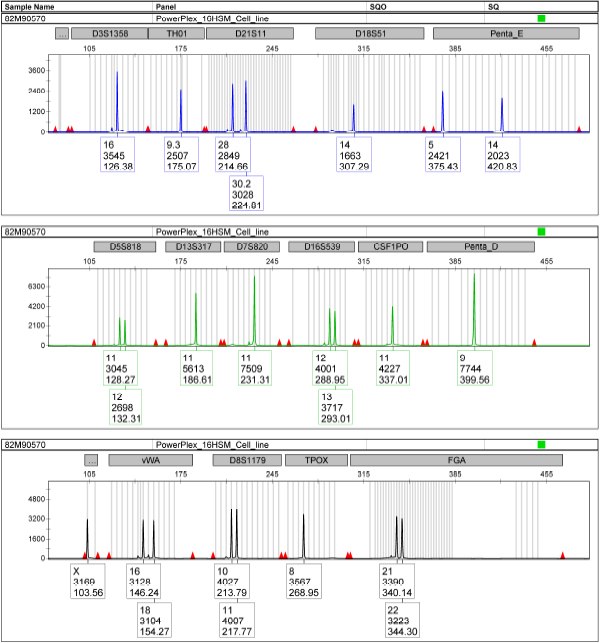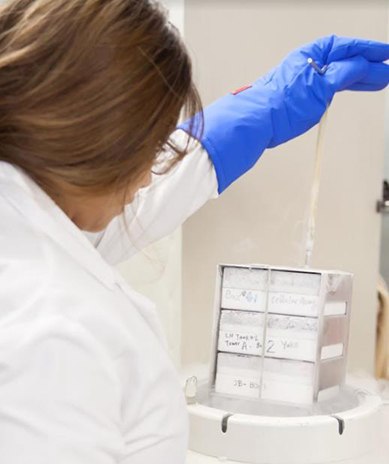Cell Line Cross-Contamination and Misidentification;
Common Cell Culture Problems
- Cell Line Identity and Authentication
- Who Needs to Authenticate Cells, and Why?
- Tests for Authenticating Cell Lines
- Cell Line Repositories, Authentication Services, and Publication Requirements
- Common Causes of Cell Line Cross-Contamination, and How to Prevent It
- Good Cell Banking Practices in the Laboratory
- Related Products

A few years after scientists working at Johns Hopkins established the first human cell line using cervical epithelial cells (HeLa) from cancer patient Henrietta Lacks in the early 1950s, it was observed that vigorous lines could contaminate and overgrow slower-growing cultures. Despite this early observation, cell line cross-contamination has proliferated into a widespread concern in the biomedical sciences that persists more than six decades later. HeLa’s usefulness as a research tool, coupled with its immortality and vigor, led to its worldwide distribution during a period when cell culturists didn’t know cross-contamination was a problem, especially when good cell culture practices are not observed.
VIDEO: Watch HeLa cells invade
To understand how a single HeLa cell is enough to take over another cell line in culture.
Using isoenzyme analysis, Stanley Gartler reported in the 1960s that 18 cell lines of presumed independent origin (including the Hep-2C and KB lines) shared a rare enzyme isoform with HeLa cells. As recently as 2008, 40 human thyroid cancer cell lines were analyzed by genetic profiling. Only 23 unique profiles were obtained, and many of the cross-contaminating cell lines were not even thyroid in origin. These cell lines had been previously used for two decades in the field of thyroid cancer research.
Who needs to authenticate cell lines, and why?
It’s estimated that 15–20% of cell lines currently in use may not be what they are documented and reported to be. Despite this evidence, a report in 2004 suggested widespread lack of vigilance in the life sciences in cell sourcing and cell line identity testing. Of over 400 survey respondents, more than a third obtained their cell lines from other laboratories, and almost half did not perform identity testing. Fortunately, established culture collections have become more proactive on the issue of cell line identity, and the International Cell Line Authentication Committee (ICLAC) curates the Register of Misidentified Cell Lines that have been identified as compromised through cross-contamination or other mechanisms, such as mislabeling.
Even without cross-contamination, cell lines may be subject to genetic drift, the probability of which increases the longer cells are in culture.
Tests for authenticating cell lines: karyotyping, genetic profiling by STR, and isoenzyme analysis

Cytogenetic analysis reveals a normal karyotype for H7 human embryonic stem cells.

Cell line authentication is often confirmed using short tandem repeat (STR) analysis which measures the exact number of repeating nucleotides in a row on the DNA strand. Here, the 16HBE14o- Human Bronchial Epithelial Cell Line (SCC150) was STR profiled to confirm cell identity.
Karyotyping, isoenzyme analysis, and DNA barcoding are all valuable tools for the detection of interspecies cross-contamination, and Short Tandem Repeat (STR) profiling has become a standard for the intra-species identity testing of human cell lines.
Karyotyping, or the examination of stained chromosomes, is a traditional test for cell line identity that is performed routinely by some cell repositories to determine whether the genotype of a cell line is stable.
Isoenzyme analysis uses band patterns from the separation of proteins by electrophoresis to detect slight species-specific differences in the structure and mobility of individual isoforms for multiple intracellular enzymes. This technique is easily performed, robust, and returns rapid results, but can be subject to low reproducibility.
STR profiling works on the same principle as the forensic DNA fingerprinting technique developed by Sir Alec Jeffreys in the 1980s. Labor-intensive Southern blotting that was part of the original protocol has been replaced by a more rapid, higher-throughput PCR-based technique that simultaneously amplifies polymorphic STR loci in the genome. Each allele occurs in the population with a particular frequency. By amplifying a sufficient number of different alleles and multiplying by the frequency in which each occurs within the population, a unique profile for a cell line is obtained. ECACC now employs an STR-based method that can distinguish cross-contamination in mouse cell lines, a problem which has troubled research laboratories for many years.
Additional emerging methods for establishing cell line identity include cytochrome c oxidase (COI) subunit analysis, and single nucleotide polymorphism (SNP) examination.
To learn more about cell line identity methods currently employed, view this informative webinar on cell line authentication presented by the International Cell Line Authentication Committee (ICLAC).
Cell line repositories, authentication services, and publication requirements
Cell culture collections like ECACC (the European Collection of Authenticated Cell Cultures, operated by Public Health England) and the American Type Culture Collection, or ATCC, have started to forge close relationships to tackle the issues of misidentification and are working together to publish a standard (American National Standards Institute [ANSI] ASN-0002) for the authentication of human cell lines. This tool employs STR profiling and a free-to-use online interactive database containing the STR profiles of almost 2,700 human cell lines. This allows users to compare STR data from their own cell lines to the database. Providing the closest matches, the database allows the identification of a cell line or, alternatively, gives confidence in the uniqueness of a novel cell line. Read more about ANSI standards for identification of human cell lines here.
It has been proposed that cell line authentication should be conditional for the receipt of grant funding and for the publication of research findings. Although authentication is not yet a requirement for all funding or publication, a number of journals have adopted an authentication policy with regard to cell lines, and requests for ECACC’s authentication service have increased significantly over the last two years. Occasionally, driven by a requirement from a journal to provide evidence of cell line identity prior to publication, samples are submitted after project completion. Results have sometimes rendered manuscripts unpublishable due to the unwitting use of the wrong cell line. Publication requirements and, more importantly, the desire of the life sciences community to enhance reproducibility therefore emphasizes the need for all researchers to take responsibility for procurement, maintenance, and validation of results obtained using cell lines.
Common causes of cell line cross-contamination in the lab, and how to prevent it
While considering significant technical advances in identification methods and the need for regular testing, it is important to spotlight the good practices to which every lab using cell lines can adhere to minimize the risk of cell line misidentification.

Identification of unexpected morphology or growth characteristics in a cell line soon after resuscitation from frozen storage could be an indication of either mislabeling the vials at the time of cryopreservation, or even the removal of the wrong vial from storage. Accurate records of cells in frozen banks must be maintained by every member of the lab with access to cell stocks.
Printed information including the cell line name in its correct universal format must be on labels suitable for low temperature storage, as inappropriately adhered labels will detach, leaving an unlabeled vial in the inventory. Users must then rely on the accuracy of the inventory records and confidence that the unlabeled vial contains the expected cells. Alternatively, cryovials may be directly and legibly labeled with lab markers compatible with very low temperature conditions.
Regular cleaning and disinfection of shared thawing equipment in the cell culture room will help to ensure cell line integrity.
A combination of regular identity testing and vigilant good cell culture practices is required to maintain confidence in cell stocks, and to assure that cell line-related data are acceptable for peer review. Taking responsibility for these best practices will help to prevent wasted time, an undesirable legacy and invalid research.
References
To continue reading please sign in or create an account.
Don't Have An Account?